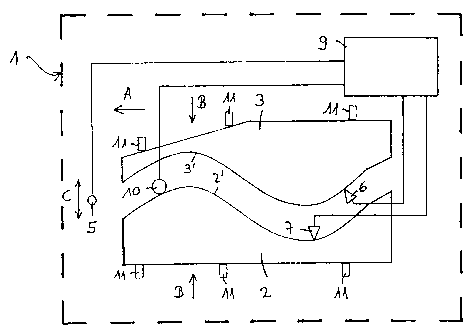Some of the information on this Web page has been provided by external sources. The Government of Canada is not responsible for the accuracy, reliability or currency of the information supplied by external sources. Users wishing to rely upon this information should consult directly with the source of the information. Content provided by external sources is not subject to official languages, privacy and accessibility requirements.
Any discrepancies in the text and image of the Claims and Abstract are due to differing posting times. Text of the Claims and Abstract are posted:
| (12) Patent: | (11) CA 2362713 |
|---|---|
| (54) English Title: | METHOD AND DEVICE FOR WELDING SHEETS |
| (54) French Title: | PROCEDE ET DISPOSITIF POUR SOUDER DES TOLES |
| Status: | Expired and beyond the Period of Reversal |
| (51) International Patent Classification (IPC): |
|
|---|---|
| (72) Inventors : |
|
| (73) Owners : |
|
| (71) Applicants : |
|
| (74) Agent: | ROBIC AGENCE PI S.E.C./ROBIC IP AGENCY LP |
| (74) Associate agent: | |
| (45) Issued: | 2007-11-13 |
| (86) PCT Filing Date: | 2000-02-15 |
| (87) Open to Public Inspection: | 2000-09-14 |
| Examination requested: | 2004-12-16 |
| Availability of licence: | N/A |
| Dedicated to the Public: | N/A |
| (25) Language of filing: | English |
| Patent Cooperation Treaty (PCT): | Yes |
|---|---|
| (86) PCT Filing Number: | PCT/CH2000/000086 |
| (87) International Publication Number: | WO 2000053366 |
| (85) National Entry: | 2001-08-16 |
| (30) Application Priority Data: | ||||||
|---|---|---|---|---|---|---|
|
During the welding of tailored blanks, the edges (2', 3') of the sheets (2, 3)
are detected in the welding device (1) by sensing elements
(6, 7). One of the edges is designated a reference edge and the other is
adapted to this reference edge using a machining device (10). The
sheets are then aligned with their edges and welded using a laser beam (5).
This provides a simple means of obtaining an allowable gap
value for the welding.
Lors du soudage d'ébauches sur mesure, les arêtes (2', 3') des tôles (2, 3) dans le dispositif de soudage (1) sont détectées par des palpeurs (6, 7). Une des arêtes est déterminée en tant qu'arête de référence et les autres arêtes sont adaptées à l'arête de référence par l'intermédiaire d'une unité d'usinage (10). Les tôles sont ensuite réunies au niveau de leurs arêtes et soudées au moyen d'un rayon laser (5). Il est ainsi facile d'obtenir une valeur d'espacement admissible pour le soudage.
Note: Claims are shown in the official language in which they were submitted.
Note: Descriptions are shown in the official language in which they were submitted.

2024-08-01:As part of the Next Generation Patents (NGP) transition, the Canadian Patents Database (CPD) now contains a more detailed Event History, which replicates the Event Log of our new back-office solution.
Please note that "Inactive:" events refers to events no longer in use in our new back-office solution.
For a clearer understanding of the status of the application/patent presented on this page, the site Disclaimer , as well as the definitions for Patent , Event History , Maintenance Fee and Payment History should be consulted.
| Description | Date |
|---|---|
| Inactive: IPC expired | 2014-01-01 |
| Inactive: Correspondence - MF | 2010-08-10 |
| Time Limit for Reversal Expired | 2010-02-15 |
| Letter Sent | 2009-02-16 |
| Grant by Issuance | 2007-11-13 |
| Inactive: Cover page published | 2007-11-12 |
| Pre-grant | 2007-08-31 |
| Inactive: Final fee received | 2007-08-31 |
| Notice of Allowance is Issued | 2007-05-16 |
| Letter Sent | 2007-05-16 |
| Notice of Allowance is Issued | 2007-05-16 |
| Inactive: IPC removed | 2007-04-26 |
| Inactive: Approved for allowance (AFA) | 2007-04-03 |
| Inactive: IPC from MCD | 2006-03-12 |
| Letter Sent | 2005-01-05 |
| Request for Examination Requirements Determined Compliant | 2004-12-16 |
| All Requirements for Examination Determined Compliant | 2004-12-16 |
| Request for Examination Received | 2004-12-16 |
| Inactive: First IPC assigned | 2002-01-29 |
| Inactive: Cover page published | 2001-12-28 |
| Letter Sent | 2001-12-24 |
| Inactive: First IPC assigned | 2001-12-23 |
| Inactive: Notice - National entry - No RFE | 2001-12-22 |
| Application Received - PCT | 2001-12-10 |
| Application Published (Open to Public Inspection) | 2000-09-14 |
There is no abandonment history.
The last payment was received on 2007-01-23
Note : If the full payment has not been received on or before the date indicated, a further fee may be required which may be one of the following
Please refer to the CIPO Patent Fees web page to see all current fee amounts.
| Fee Type | Anniversary Year | Due Date | Paid Date |
|---|---|---|---|
| Registration of a document | 2001-08-16 | ||
| Basic national fee - standard | 2001-08-16 | ||
| MF (application, 2nd anniv.) - standard | 02 | 2002-02-15 | 2002-02-06 |
| MF (application, 3rd anniv.) - standard | 03 | 2003-02-17 | 2003-01-24 |
| MF (application, 4th anniv.) - standard | 04 | 2004-02-16 | 2004-01-20 |
| Request for examination - standard | 2004-12-16 | ||
| MF (application, 5th anniv.) - standard | 05 | 2005-02-15 | 2005-01-20 |
| MF (application, 6th anniv.) - standard | 06 | 2006-02-15 | 2006-01-27 |
| MF (application, 7th anniv.) - standard | 07 | 2007-02-15 | 2007-01-23 |
| Final fee - standard | 2007-08-31 | ||
| MF (patent, 8th anniv.) - standard | 2008-02-15 | 2008-01-23 |
Note: Records showing the ownership history in alphabetical order.
| Current Owners on Record |
|---|
| ELPATRONIC AG |
| Past Owners on Record |
|---|
| BRUNO KAEGI |
| ROMEO BUCHER |